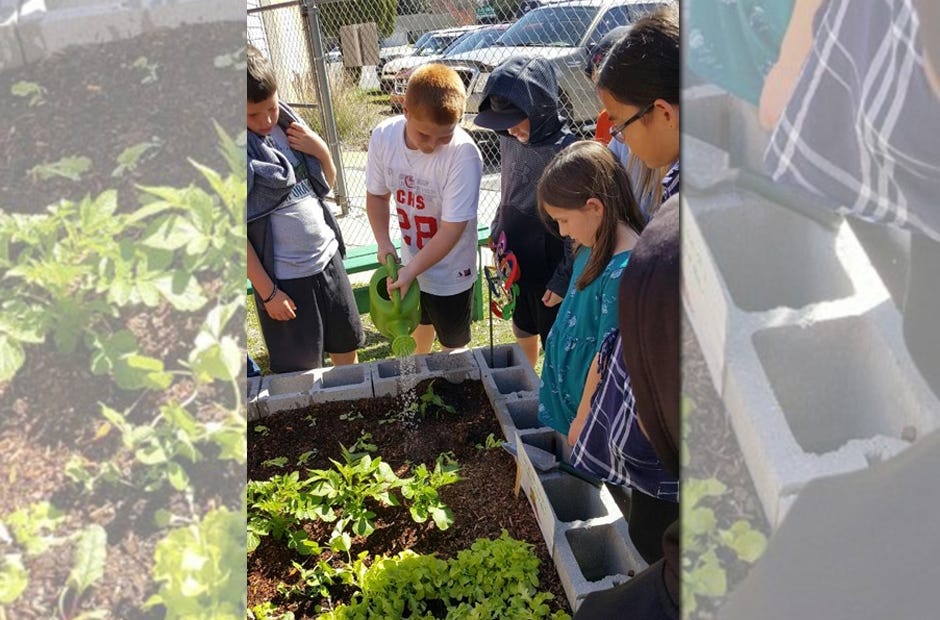![Bob Sikes Elementary fourth-graders in Jordan Appelberg's fourth grade class enjoy planting and working in their raised bed garden. [Special to the News Bulletin]](http://127.0.0.1/wordpress/wp-content/uploads/2022/01/ghows-DA-4ac996f0-bf2c-6184-e053-0100007fd0dc-62f9693d.jpeg)
Children learn best when they are actively involved, doing something. Gardening is a great way to include children in experiential learning that promotes hands-on activities in an outdoor classroom.
This year, our Okaloosa County Master Gardener volunteers, 4-H and the Family Nutrition Program have teamed up to reach several local schools and provide the expertise and resources to use gardening and teach youths about science, biology and nutrition.
At Bob Sikes Elementary School, teams built six raised beds so that each fourth-grade class could plan and prepare, and then care for their class garden. The enthusiasm is evident each week as youths get to plant, weed and water plants.
Lessons for the week center on science and biology; students learn how plants grow, and receive education on nutrients needed for plants and problems like good bugs and bad bugs.
As students learn and take care of their garden, nutrition lessons center on vegetables they will soon harvest. Tasting sessions and basic nutrition are taught in hands-on activities that allow students to experience new food and learn about healthy eating.
Introducing children to gardening lets them see where their food comes from, and helps them understand the importance of eating whole foods locally grown and harvested.
Teachers who participate also use the garden as a place for other enrichment activities like sitting in the garden and writing a paper or using the ambience to create artwork.
If you have children at home and want to try an easy planting activity, grow potatoes in a laundry basket or other large container.
You will need one laundry basket, which can be purchased at a local dollar store.
Here’s what to do:
- Fill the baskets with about 2 inches of soil and compost.
- Put two to three seed potatoes into each basket. Cut each potato into three pieces with two to three eyes each. Only use certified seed potatoes. Certification ensures that the seed tubers are free of disease. You can buy certified seed from local garden centers.
- Cover the potato pieces with soil just barely to the top. Keep doing this until you have half the basket full of growing potatoes and soil.
- As the potatoes grow, add soil to the basket to keep the tops just above the soil; this simulates "hilling" the potatoes in a garden.
- Water the basket slowly; holes on the sides can make it challenging if you get in a hurry.
Potatoes are ready within 100-110 days, depending on the variety. One of the most common varieties, Red Pontiac, can be found locally.
Pamela H. Allen is an agent at the University of Florida's Institute of Food and Agricultural Sciences Extension office in Crestview.
Children can help prepare these simple recipes in the kitchen featuring commonly grown vegetables.
Crispy Potato Wedges
Ingredients
- 4 potatoes, scrubbed clean
- 1/4 cup extra virgin olive oil
- 1/4 teaspoon salt
- 1/4 teaspoon garlic powder
- 1/2 teaspoon paprika
- 1/4 teaspoon black pepper
- 2 tablespoons chopped fresh parsley leaves
- 1/4 cup grated parmesan cheese
Directions
- Cut potatoes into wedges by cutting lengthwise in half then slice each half into three slices.
- Place the salt, garlic powder, paprika and black pepper in a mixing bowl. Add potatoes and toss them in the spices. Next, add the olive oil to the bowl and toss until potatoes are coated.
- Place coated potato wedges so they are in a single layer on a nonstick baking pan.
- Bake at 450 degrees for 30 to 35 minutes until the potatoes are cooked through, browned and crispy.
- While potatoes bake, chop the parsley and grate the parmesan cheese. Place both into a large mixing bowl.
- After baking and while still hot, toss potato wedges in the mixing bowl with parsley and cheese.
Serves 4–6.
Raw Veggies with Yogurt Dip
Ingredients
- 1 cup nonfat plain yogurt
- 1 package ranch dressing
- Veggies (may use any raw vegetable grown in the garden)
- Carrots
- Broccoli
- Green or red bell peppers
- Cucumbers — washed and thinly sliced
Directions
- Wash hands and surfaces.
- Wash vegetables using a vegetable brush. Pat dry and cut vegetables into bite-size pieces.
- Mix yogurt with ranch dressing mix in a medium bowl.
- Place vegetables and dip on a tray and enjoy.
- Immediately refrigerate leftovers.
Serves 6–8.
Do try this at home


This article originally appeared on Crestview News Bulletin: School gardening promotes healthy eating
